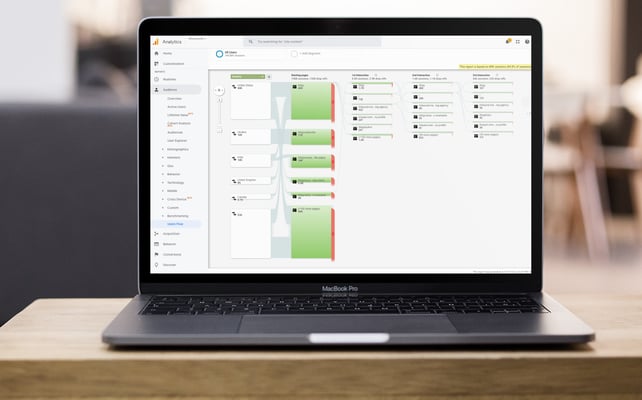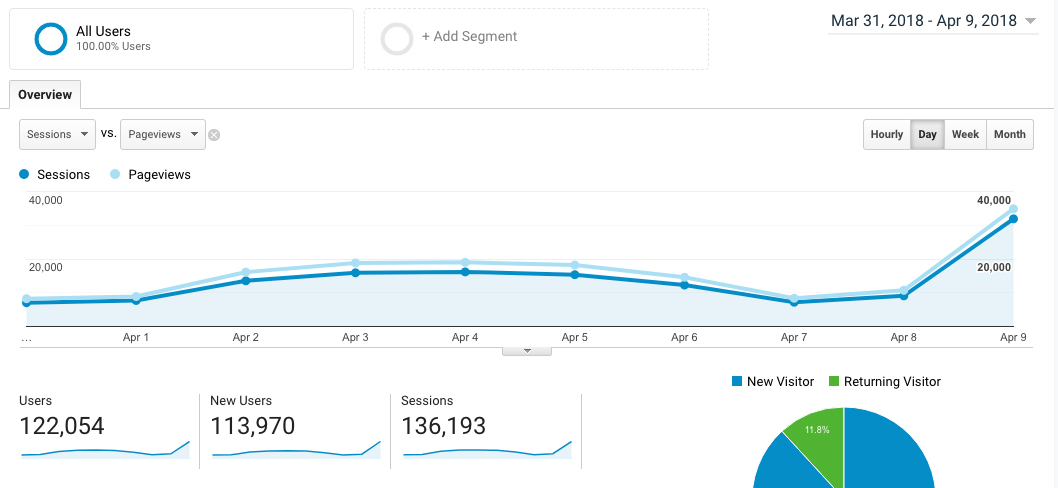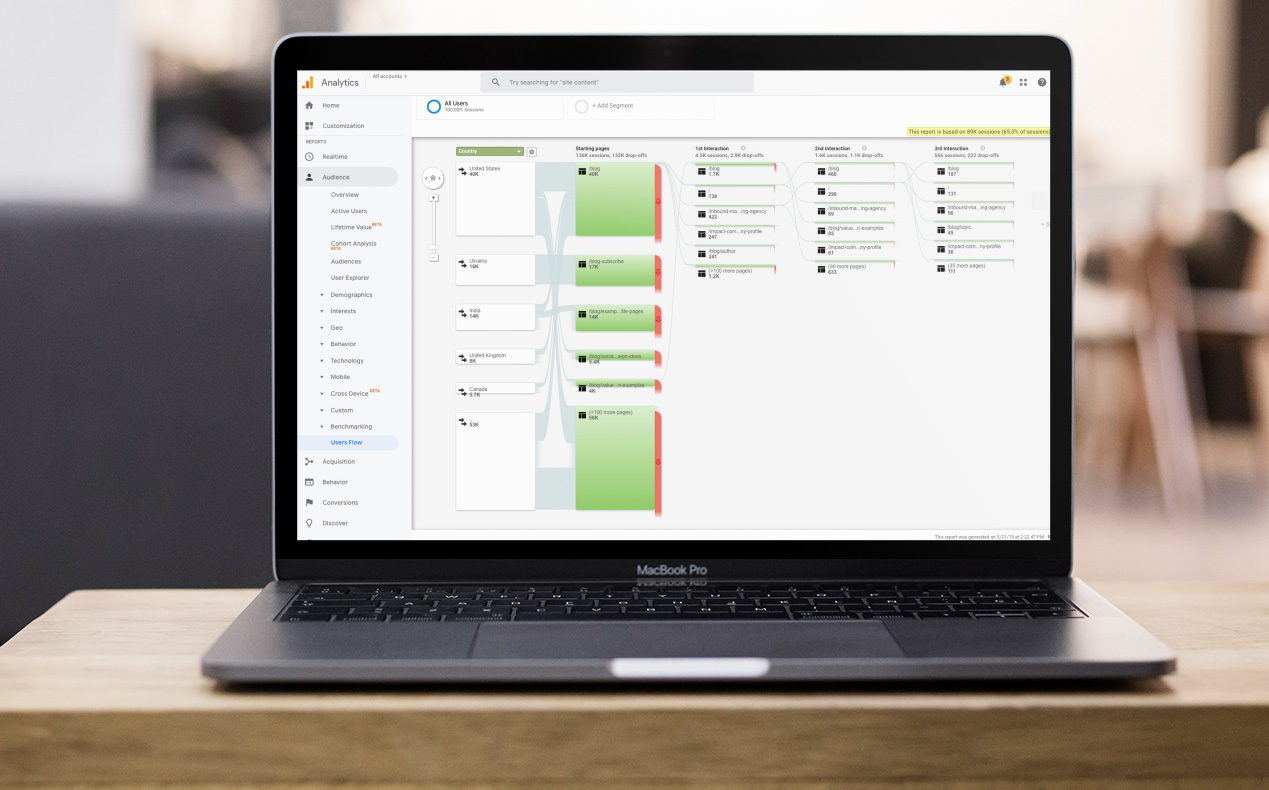Topics:
Reporting & PerformanceSubscribe now and get the latest podcast releases delivered straight to your inbox.
Sessions vs Page Views: Which Website Metric Should You Be Measuring & When?

May 24, 2019

For most of its recorded history, marketing was hindered by the inability to accurately measure audience engagement.
If you created a good ad and placed it well, you hoped the audience would be there and see it — but there wasn’t really a great way to measure it.
I’ve heard there was an old joke: “I know I’m wasting half of my marketing budget, I’m just not sure which half.”
With the spread of digital marketing comes a proliferation of data and metrics that can be used to measure reach, engagement, and other factors of audience interaction with your message.
In my career, I’ve seen these changes first hand.
I am a web developer now, but I have been working in the advertising business for more than 15 years. For the first few, I worked in print marketing as a graphic designer.
We have tools and measurements in the digital world that were simply not possible or relevant in print.
For example, website metrics.
Some of the most significant website metrics we track today are page views and page sessions.
To those of you outside of the world of web development, you might know these terms are similar — but the differences between them are important to marketers.
What Is Page Views?
Page views, as you would guess, is a metric that simply measures the number of times a webpage was loaded. A user could have reached your page in any way, whether via search or by clicking an internal or external link.
Regardless of their point of origin, if a visitor loads your page, your page views total ticks up.
The downside to such information is that, to harken back to the old days of marketing, you can’t really measure much else about the interaction.
If your page was an article in the New York Times, page views is like the number of papers sold.
Some people will open the paper (visit the website), sit down in a comfortable chair, and carefully read the copy of your ad. Some people will crumple up the paper and throw it in the trash (or bounce). Everyone else is somewhere in between.

For your webpage, some people read closely and linger, some people arrive there by accident and quickly close the tab. Some people reload the page. Page views does not differentiate.
Page views was the metric for years, but as analytics have gotten more sophisticated and detailed, there are new tools out there. But page views is still vital data.
An easily-digestible review of which pages are attracting attention can be rather useful.
For instance, if you can see that a certain page is generating a profusion of views, that would be a good location to place a clickable link, a call-to-action (CTA), or another piece of interactive content. If a particular page is viewed frequently, you can infer that that page’s SEO is excellent and that its content is stellar. Such knowledge can help you plan your future content creation efforts.
Page views are a way to know where your traffic is — especially where people land on your site. To put it another way, sometimes you just need to find the busiest street so you know where to put your sign. Page views gives you that.
By contrast, if a certain page is not being loaded often, perhaps completing an SEO analysis could be useful to boost traffic. Or, perhaps internal links are broken. Maybe it contains content that people are not as interested in.
Without page view data, such evaluations would be more difficult.
What Is Page Sessions?
By contrast, page sessions offers more information about a visitor’s actual interaction with the site.
The most immediate difference is that page sessions conveys the amount of time a user spent on any given page.
Put simply, sessions data gives you a better idea of the user’s journey.
You can see how she arrived, where he navigated, or how much time someone spent on the site.
You can see at what point people engaged with the content, if they did.
We also use page sessions to tell us which pages are functioning best.
We can see which ones are being searched the most. We can know which content our visitors are most interested in.

We know their path through the site. If they fell off, we know where it happened.
This metric, however, does not take into account visits made by the same person or how many times that person refreshes a page.
Session information is invaluable for sites with a very clear user flow plan.
You can clearly see how the planned behavior for a user compares to the actual behavior. In these ways, analysis of page sessions is a more holistic interpretation of what’s actually happening on your site. This can help you evaluate internal links, the structure of your content (Think: pillar pages and related articles), and whether you are effectively answering visitors' needs.
Are you informing and delighting your visitors with offers and related information? Are your CTAs directing flow through desired channels? Are you beginning to convert leads? Are you being helpful enough to make your visitors want to stay and learn more?
Your Job as Analyzer
As an analyzer, it is your job to synthesize this data in a way that makes it presentable and digestible and most importantly, useful.
I once worked with a CMO (Chief Marketing Officer) who was adamant that any analytics information ever provided be useful and easily interpreted.
Rather than spreadsheets and a data dump, it was up to the team to be able to organize our data, which included page views AND page sessions, to give him an idea of how the site was performing. Are people finding our site? Are they staying once they arrive? Where do we see opportunities?
Just like with anything else in marketing, website data is not very useful if you don’t have clearly articulated goals.
Page views and page sessions can be vital tools for measuring the efficacy of your outreach efforts. And they allow you to begin to organize growth initiatives and effectively plan and measure strategies. Without such insights, you are left guessing.
Analytics data gives us the opportunity to track and examine website interactions. Use page views to track traffic and page sessions to track engagement. That way, you have the clearest view possible of how well your site is performing.


Order Your Copy of Marcus Sheridan's New Book — Endless Customers!